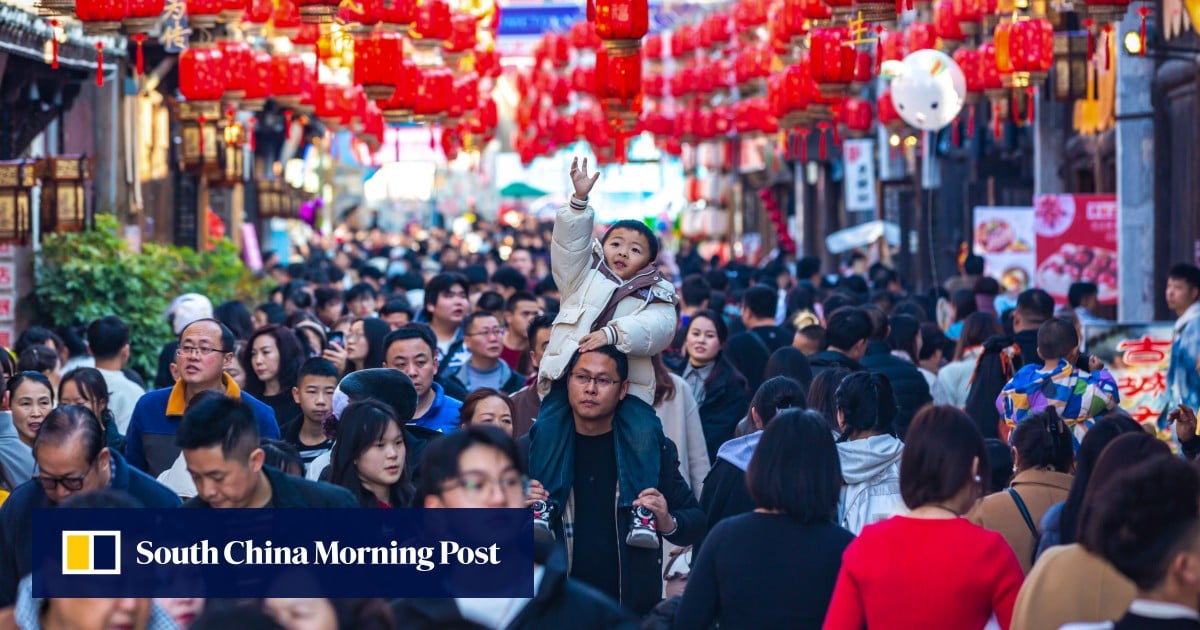Revenue from domestic tourism is expected to bounce by 23 per cent to 6 trillion yuan (US$839 billion) from 2023 to 2024 – exceeding the 5.7 trillion yuan (US$796 billion) revenues achieved in 2019.
Tourism in China has been recovering since December 2022, when the country’s zero-Covid policy was dropped, with the number of in-country trips last year returning to about 80 per cent of pre-pandemic levels.
The ongoing Lunar New Year – when tens of millions of Chinese travel to their hometowns for family reunions – has also seen a robust rebound in domestic passenger traffic.
According to the report, in-province trips accounted for about 75 per cent of domestic travel from January to October last year, compared with about 50 per cent in the same period of 2019.
In its December 2022 report, the CTA said that more than 80 per cent of domestic trips that year were within provinces.
Business confidence has been slower to recover than people’s willingness to travel, with more active stimulus and guidance required , the CTA report said.
China has identified tourism as one of its “new consumption growth points” amid sluggish economic growth, with President Xi Jinping highlighting an expansion in domestic demand as part of policies to strengthen the economy.
China’s challenging start to 2024: 6 takeaways from the economy in January
China’s challenging start to 2024: 6 takeaways from the economy in January
Xi promised a boost for the domestic tourism sector during December’s central economic work conference, China’s top national policymaking meeting with a focus on the economy.
In a bid to attract international travellers and businesses, Beijing has also rolled out visa-free policies to a list of European and Asian countries.
Some 10,000 visa-free trips were made between Shanghai and Singapore in the first three days of the new policy, accounting for 90 per cent of travel between the two countries, according to Chinese online media outlet ThePaper.cn on Monday.
The number of Chinese travellers to Singapore jumped by 15 times while Singaporean visitors to Shanghai increased nine fold, compared to the same period last year, the media report said.
Visa-free China travel may offer ‘additional stimulus’ Beijing is looking for
Visa-free China travel may offer ‘additional stimulus’ Beijing is looking for
But the inbound travel recovery has been unbalanced and slower than the domestic market, according to another CTA report released on February 1, with foreign arrivals last year reaching just 36 per cent of 2019 numbers.
Although inbound passenger traffic last year recovered by about 60 per cent from its 2019 level, it was mainly driven by entries from Hong Kong, Macau, and Taiwanese residents.
While the CTA expects a full recovery of Hong Kong, Macau, and Taiwanese resident entries, it predicts entry by foreigners to reach just half its pre-pandemic strength.
The report said there were several reasons for the decline, including closures of Chinese agents specialising in inbound travel during the pandemic and higher travelling costs.
On the other hand, outbound travel is expected to reach 130 million this year, to achieve about 77 per cent of the pre-pandemic level of 2019, according to official statistics.

